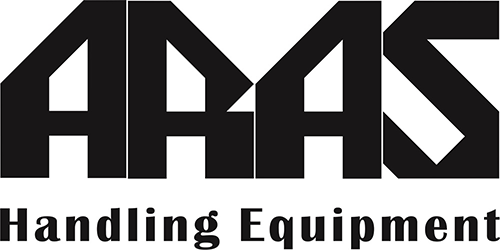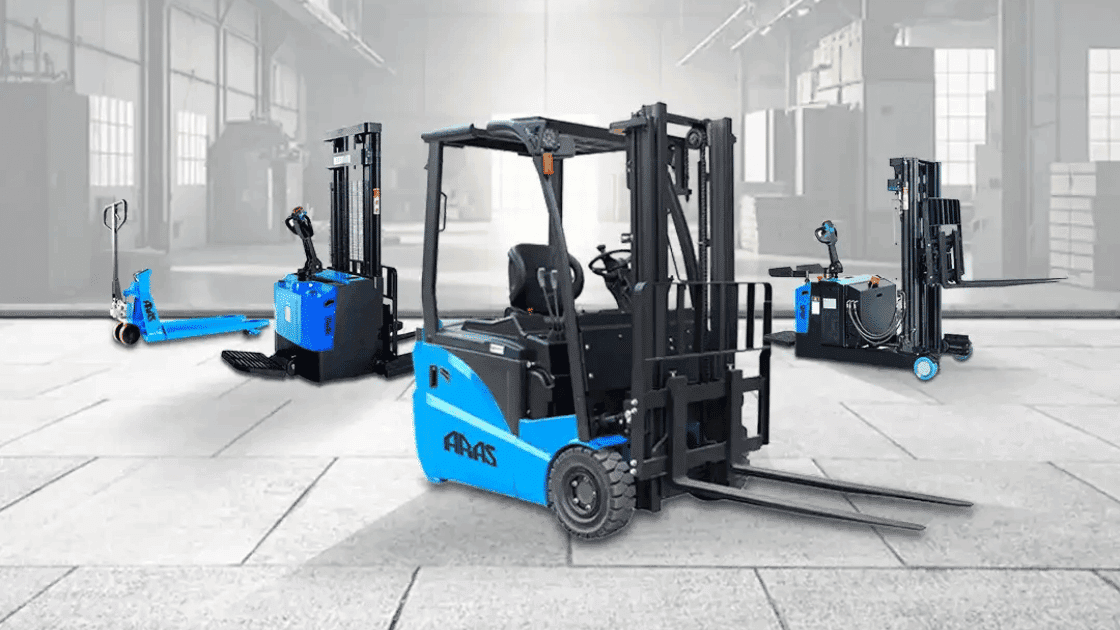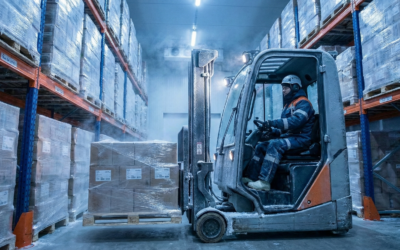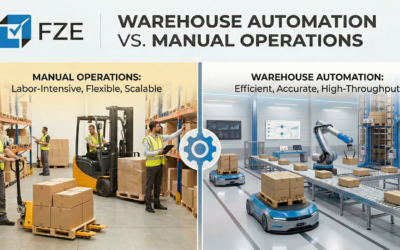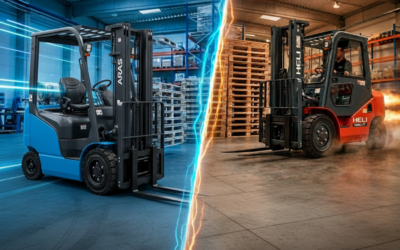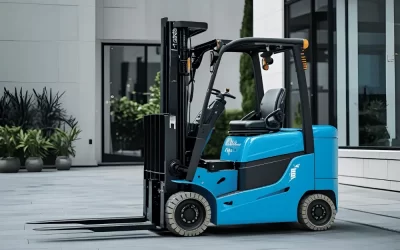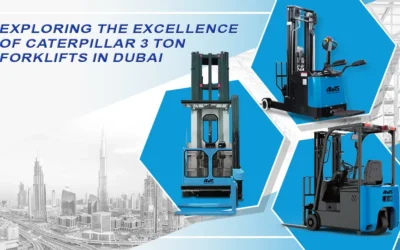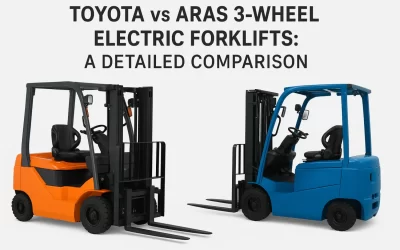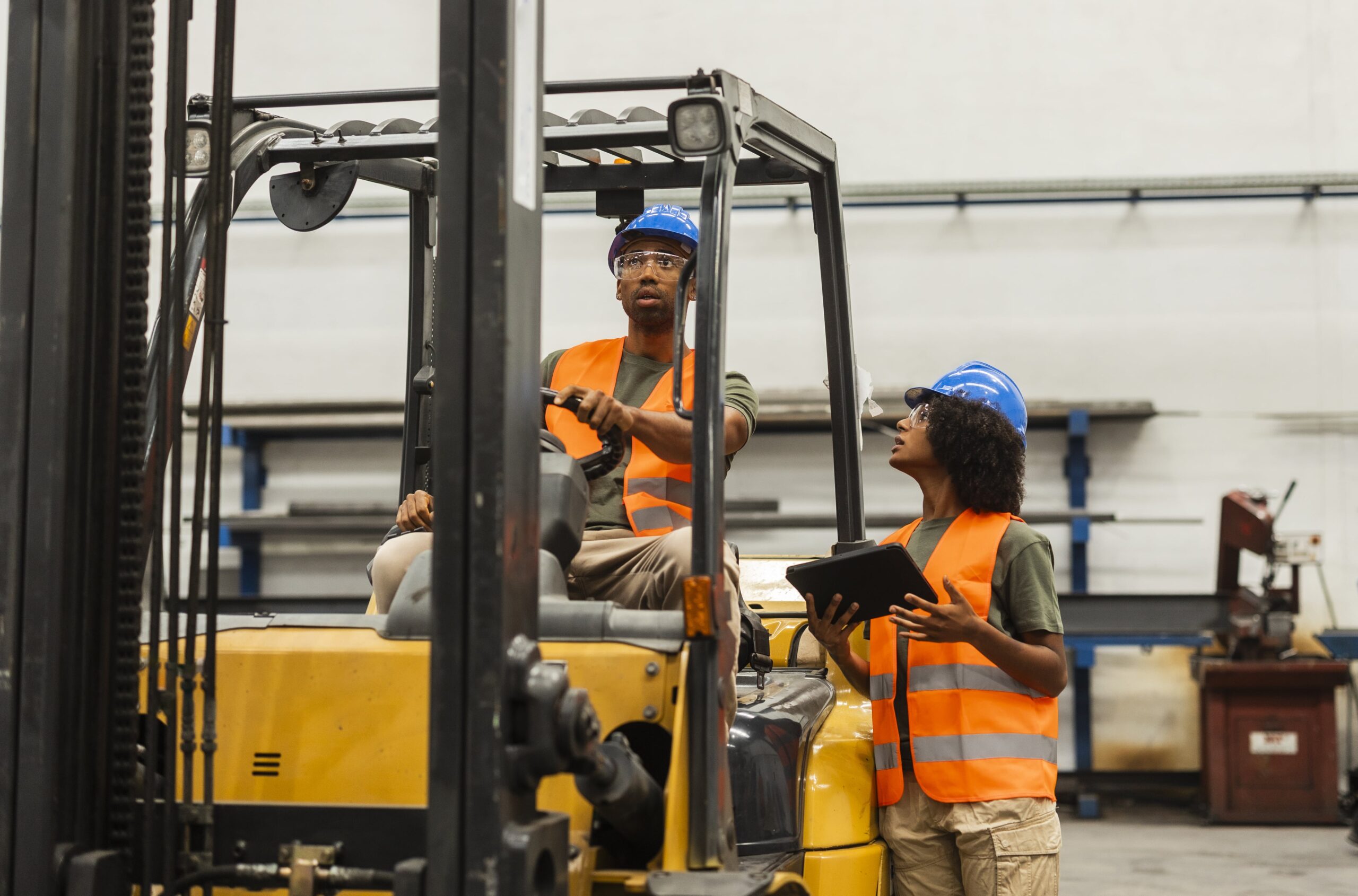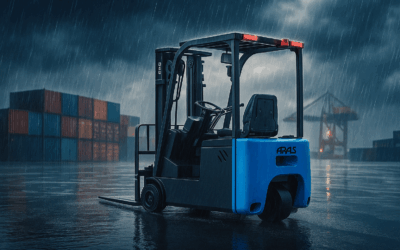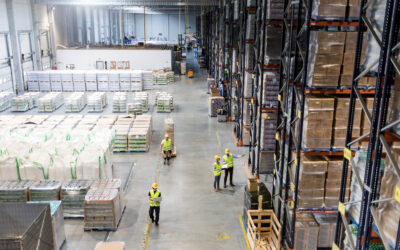Introduction
Forklifts are often the unsung heroes of the modern supply chain. They move products quickly, safely, and efficiently from point A to point B, keeping warehouses organized, job sites productive, and shelves stocked. Without forklifts, many businesses would struggle to handle inventory, load trucks, or keep pace with customer demands.
This guide is here to help you understand everything you need to know about forklifts. We will break down what forklifts are, explore different types and features, and discuss how to select, finance, and maintain them. We’ll also look at how to create a safe work environment, keep your forklift fleet running smoothly, and use data and technology to optimize your operations. Finally, we’ll consider future trends and answer some frequently asked questions about forklifts.
Whether you’re a first-time buyer, an experienced warehouse manager, or just curious about the world of material handling, this content aims to give you a complete, easy-to-understand overview. By the end, you’ll have the tools and insights to make informed decisions that benefit both your bottom line and your workforce.
1. What Are Forklifts and Why Are They Important?
A forklift is a powerful, mobile machine with two metal forks at the front, used to lift and transport heavy loads. They help businesses move materials quickly and safely, and they’re essential in modern supply chains. Without forklifts, many industries would rely on manual labor or less efficient methods, slowing down operations and increasing injury risks. From warehouses and retail distribution centers to manufacturing plants and construction sites, forklifts play a vital role in keeping goods moving smoothly.
A Brief History of Forklifts
Although simple lifting machines appeared in the early 1900s, forklifts as we know them began to evolve in the mid-20th century. The rise of mass production, global trade, and advanced logistics required more efficient ways to handle products. Over decades, forklifts improved in design, safety, and performance. Today, they come in a wide variety of types, each suited to different tasks and environments.
Key Industries That Rely on Forklifts
- Warehousing and Distribution: In large storage facilities, forklifts unload trucks, stack pallets, and pick orders for shipment.
- Manufacturing: Factories depend on forklifts to deliver raw materials to production lines and transport finished goods.
- Retail and E-Commerce: High-volume order fulfillment centers need forklifts to keep up with the rapid turnover of inventory.
- Construction: Heavy-duty, rough-terrain forklifts carry construction materials across job sites, handling everything from lumber to steel beams.
- Maritime and Ports: Specialized forklifts and container handlers help move large shipping containers and cargo on docks.
Basic Forklift Anatomy and Terminology
- Mast: The vertical structure that lifts and lowers the load. Some masts reach high into warehouse racking.
- Carriage: The platform where the forks or other attachments mount.
- Forks: Two metal prongs that slide under a load, typically pallets, to lift and carry them.
- Counterweight: A weight at the back that keeps the forklift stable when lifting heavy loads.
- Power Source: Can be an internal combustion engine (diesel, LPG) or an electric battery.
- Operator Compartment: Includes the seat, steering wheel, brakes, accelerator, and control levers.
Common Types of Forklifts
- Counterbalance Forklifts: The standard type for general tasks, balancing load weight with a rear counterweight.
- Reach Trucks: Ideal for narrow aisles and high racks, with extended reach capabilities.
- Pallet Jacks and Stackers: Smaller, lower-cost options to move pallets at floor level or lift them a short height.
- Rough Terrain Forklifts: Built for outdoor use with sturdy tires and enhanced stability on uneven ground.
- Very Narrow Aisle (VNA) Forklifts: Designed to work in tight spaces, these maximize warehouse storage density.
Understanding these basics gives you a strong foundation. Next, let’s dig into how to choose the right forklift for your unique needs.
2. Selecting the Right Forklift: Decision-Making Criteri
Assessing Your Requirements
Start by asking: What will the forklift do each day? Consider load weight, load shape, required lift height, and the environment. For example, if you handle standard pallets indoors, a basic electric counterbalance unit may suffice. If you need to reach high shelves in narrow aisles, a reach truck might be better. For outdoor work on rough surfaces, a diesel-powered rough-terrain model could be perfect.
Read: Tips for Finding the best forklift for sale in UAE
Considering Power Sources and Fuel Types
- Electric Forklifts: Quiet, clean, and good for indoor use. They require charging stations and proper battery maintenance, but they’re often cheaper to run long-term. Find product Information on Electric Forklift.
- Diesel/LPG Forklifts: More powerful, suitable for heavy loads and outdoor conditions. However, they produce emissions and require ventilation if used indoors.
- Sustainable Options: Lithium-ion batteries, hydrogen fuel cells, and even solar-charged batteries are emerging. These reduce emissions and can offer longer run times.
Attachments and Customization
Forklifts can be fitted with various attachments:
- Sideshifters: Let you shift the load left or right without moving the entire truck.
- Rotators: Useful for dumping containers or rotating loads.
- Clamps and Specialized Forks: For handling drums, rolls, or oddly shaped materials.
These add-ons tailor the forklift to your exact operations, improving efficiency and reducing manual handling.
Balancing Cost, Capability, and Environment
Don’t just pick the biggest forklift. An oversized model can be harder to maneuver and more expensive to buy and maintain. Aim for a forklift that fits your space and load requirements. If you operate in a clean indoor setting, consider an electric model with minimal emissions. If conditions are rough or outdoors, a heavy-duty diesel might be more suitable.
Testing and Operator Feedback
Before purchasing, request a demo. Let your operators try the machine to see if it meets their needs. Consider their feedback—operators who find a forklift comfortable and intuitive are more likely to use it safely and efficiently.
With the right forklift identified, let’s consider the financial side of things—planning for costs today and into the future.
3. Total Cost of Ownership and Financing Strategies
Looking Beyond Upfront Costs
The price tag on the forklift is just the starting point. Total Cost of Ownership (TCO) includes ongoing expenses like:
- Maintenance and spare parts.
- Fuel or electricity.
- Operator training and safety equipment.
- Insurance and any financing costs.
- Downtime expenses if the forklift breaks down.
Estimating TCO helps you avoid surprises. A model that’s slightly more expensive upfront but cheaper to maintain could save you money over its lifetime.
New vs. Used or Refurbished Forklifts
Used forklifts can be a great deal if they’re well-maintained. They can fit smaller budgets and handle lighter workloads. However, always check maintenance records, hours of operation, and test the forklift’s performance before buying used. Reputable dealers often refurbish older models, replacing worn parts and guaranteeing quality.
Rental and Leasing Options
If you’re unsure about long-term needs or face seasonal fluctuations, renting or leasing could be the way to go:
- Short-Term Rentals: Useful during busy seasons or special projects.
- Long-Term Leasing: Spreads costs over time, includes maintenance packages, and lets you upgrade as technology improves.
- Rent-to-Own: A flexible path if you want to test a model before fully committing.
Financing and Warranty Terms
Discuss financing options with suppliers or dealers. Competitive interest rates, leasing agreements, or payment plans can help manage your cash flow. Pay attention to warranty details—longer, more comprehensive warranties can protect you from unexpected repair costs. Maintenance contracts that include regular servicing and priority support are also valuable.
Calculating ROI
Measure how quickly a forklift pays for itself by considering:
- Improved productivity and faster order fulfillment.
- Reduced labor costs from less manual handling.
- Lower accident rates and fewer product damages due to safer handling.
This holistic view shows how the right forklift is an investment in your company’s success rather than a mere expense.
With finances in order, the next major consideration is keeping everyone safe and compliant.
4. Safety, Compliance, and Operator Training
The Importance of a Safety-First Culture
Forklifts can pose serious hazards if not operated correctly. One wrong move can lead to injuries, damaged goods, or costly downtime. Encouraging a safety-first culture is about more than following rules—it’s protecting your team and preserving your company’s reputation. Employees who feel safe are more productive, and you avoid expensive insurance claims and potential legal issues.
Regulatory Standards and Compliance
Different regions have specific rules, often from agencies like OSHA, governing forklift operation:
- Operators must be properly trained and certified.
- Forklifts should carry visible load capacity plates and safety labels.
- Regular inspections and maintenance are required.
- Specific environmental rules may apply if running diesel or LPG indoors.
Staying compliant avoids fines, improves workplace safety, and reassures customers and partners.
Operator Training and Certification
High-quality training covers equipment inspection, load handling, safe travel speeds, and emergency procedures. Practical, hands-on sessions help operators gain confidence, while classroom learning explains the theory and regulations. Regular refreshers ensure operators stay sharp, reducing the risk of accidents due to complacency or outdated knowledge.
Safety Features and Best Practices
Modern forklifts often include:
- Warning Lights and Alarms: Alert nearby workers when a forklift is moving.
- Speed Control Systems: Automatically limit speed in high-traffic or sensitive areas.
- Enhanced Visibility: Better mast designs, mirrors, cameras, and lighting reduce blind spots.
Encourage operators to follow a set of best practices:
- Always wear seatbelts and use proper personal protective equipment (PPE).
- Inspect forklifts before each shift.
- Never overload or operate at unsafe speeds.
- Keep clear lines of sight and communicate with coworkers.
Ergonomics and Operator Well-Being
A comfortable operator is a safer operator. Ergonomic seats, adjustable controls, and reduced vibrations can lower fatigue and injuries. When operators feel good physically, they are more alert and careful, leading to fewer incidents.
Once you’ve built a safe environment, the next challenge is keeping your forklifts running smoothly through proper maintenance.
5. Maintenance, Repairs, and Lifecycle Management
Preventive Maintenance: Your Best Investment
Regular maintenance is essential. Simple tasks like changing filters, checking tire pressure, and inspecting chains prolong the forklift’s life and catch minor issues before they become major problems. Preventive maintenance schedules can be based on hours of operation or set timeframes—whichever ensures timely upkeep.
Daily Inspections and Checklists
Operators should perform a quick check at the start of each shift. Look for leaks, worn tires, loose forks, or malfunctioning lights. Listen for unusual sounds and feel for jerky movements. A simple checklist keeps everyone accountable and maintains safety standards.
Common Problems and Their Solutions
- Battery Issues in Electric Forklifts: Batteries degrade over time. Proper charging habits (avoid full depletion) and regular maintenance can extend battery life.
- Engine and Transmission Troubles: Strange noises, reduced performance, or excessive smoke from diesel or LPG forklifts signal a need for professional servicing.
- Hydraulic Leaks and Lift Problems: Low hydraulic fluid or worn seals can cause slow or uneven lifting. Addressing these early prevents costly downtime.
Working with Reliable Technicians
Partner with certified technicians who know your forklift’s brand and model. Some dealers offer service contracts that guarantee prompt assistance. Building a relationship with a trusted maintenance provider means quicker repairs, better spare parts availability, and long-term cost savings.
Lifecycle Management and Replacement Decisions
Forklifts don’t last forever. Eventually, wear and tear increase maintenance costs. Consider refurbishing older units if frame and core components are still sound. When replacement is necessary, timing it right prevents an outdated, unreliable forklift from dragging down productivity. Detailed records of repairs, downtime, and costs help you make informed decisions on when to retire a forklift.
Record-Keeping and Using Data
Keep a log of maintenance dates, part replacements, and repairs. Over time, these records reveal patterns. Maybe one forklift consistently needs new tires sooner than others—this could indicate operator habits or floor conditions that need attention. By leveraging data, you can fine-tune maintenance schedules and reduce overall costs.
With well-maintained forklifts, let’s explore how to arrange your facility to get the most out of your equipment.
6. Warehouse and Facility Optimization
Designing an Efficient Layout
The warehouse layout affects forklift travel time, load handling, and overall productivity. Consider:
- Aisle Widths: Narrower aisles let you store more, but only if your forklifts can navigate them safely.
- Racking Systems: Match rack height and design with the forklift’s lift capacity.
- Logical Product Placement: Store frequently accessed items closer to loading docks to reduce travel distance.
These steps streamline operations, boost speed, and minimize congestion.
Pedestrian and Vehicle Separation
Use guardrails, barriers, painted floor lines, and signage to keep forklift paths separate from foot traffic. Clearly marked pedestrian walkways reduce collision risks. Some warehouses use dedicated forklift zones and implement crossing points with stop signs or warning lights.
Applying Lean Principles
Lean principles aim to eliminate wasted motion, reduce waiting times, and shorten travel distances. One way is to measure how often forklifts idle waiting for tasks or travel empty. Another is identifying frequently used products and placing them in prime locations for quick access. Small improvements across the board add up, making a big difference in throughput and safety.
Embracing Technology and Data
Telematics systems provide real-time data on forklift usage. They can show you if certain forklifts spend too much time traveling empty or waiting for work. Use this information to reorganize storage areas, adjust shift schedules, or train operators more effectively. Some warehouses use Warehouse Management Systems (WMS) that direct forklifts to the best routes or equipment required for a given task.
Integrating Automated Solutions
As automation becomes more affordable, you might integrate forklifts with other technologies:
- Automated Storage and Retrieval Systems (ASRS): Robotic cranes and automated pallet shuttles can work with forklifts to handle repetitive, high-density tasks.
- Inventory Control Software: Barcode scanners and RFID tags help forklifts track products, reducing errors and inventory discrepancies.
Seasonal and Demand Fluctuations
If demand spikes during holidays or promotional periods, consider renting additional forklifts or temporary storage solutions. Plan ahead so your forklift fleet and layout can handle peak workloads without bottlenecks or quality issues. After the rush, evaluate what worked and what didn’t for continuous improvement.
Optimizing your facility sets the stage for a productive operation. Next, let’s look at how to pick reliable brands and suppliers to ensure long-term success.
Read More: https://arasfze.com/ensuring-safety-excellence-explosion-proof-stackers-in-dubai/
7. Choosing Trusted Brands and Suppliers
Evaluating Brand Reputation
A forklift is only as good as the company behind it. Established brands usually have proven track records, durable designs, and extensive support networks. Read reviews, consult industry forums, and ask other businesses about their experiences. Quality matters—reliable forklifts break down less often, saving you money and hassle.
Local Dealers and Service Centers
Even the best forklift needs parts and service eventually. A local dealer can provide:
- Prompt access to original spare parts.
- On-site maintenance and repair services.
- Operator training programs and safety inspections.
- Flexible financing and trade-in options.
Check if the dealer’s technicians are well-trained and if they carry a solid inventory of parts. Good dealer support reduces downtime and keeps your operation running smoothly.
Warranty and Service Contracts
A generous warranty can save you thousands in repair costs. Some brands offer extended warranties that cover major components for several years. Service contracts can include routine maintenance visits, priority repairs, and discounted parts. These packages provide stability and predictable expenses, allowing you to budget more effectively.
Tailored Solutions by Industry
Different industries have unique challenges. A good supplier understands your sector and recommends suitable forklifts, attachments, and maintenance plans. For instance:
- Food and Beverage: May need electric forklifts with minimal emissions for cold storage.
- Construction: Requires rough-terrain models that withstand outdoor conditions.
- High-Volume Distribution: Needs advanced fleet management tools and narrow aisle forklifts for dense storage.
Opportunity to Test and Compare
Reputable dealers often let you test forklifts on-site. This hands-on trial helps you see how the machine handles your actual loads, floor conditions, and workflows. Comparing multiple brands side-by-side ensures you pick the best fit. Don’t hesitate to negotiate prices, warranties, and service terms to get the best value for your investment.
With the right forklift and partner chosen, you’ll be well-positioned to take advantage of future trends in the industry.
8. Future Trends and Innovations in Forklift Technolog
Green Energy and Sustainability
As businesses focus on sustainability, forklifts are following suit. Lithium-ion batteries charge faster and last longer than traditional batteries. Hydrogen fuel cells offer quick refueling and zero emissions. Solar charging stations may become more common, reducing reliance on grid power. Choosing eco-friendly options can improve your brand image and meet regulatory or customer expectations.
Smarter and Safer Forklifts
Artificial intelligence and machine learning are entering the forklift world. Future models might predict when a part will fail, schedule maintenance automatically, or adapt speed and handling based on the load’s weight and shape. Collision avoidance systems, advanced sensors, and cameras will further reduce accidents, protecting workers and equipment.
Integration with Warehouse Automation
As automated guided vehicles (AGVs) and robots become more affordable, forklifts will likely work alongside them. Imagine a warehouse where AGVs handle repetitive tasks—like shuttling pallets between two fixed points—while human-operated forklifts manage complex, variable tasks that require judgment or adaptability. A fully integrated system might coordinate movements so that every machine knows where others are, reducing congestion and boosting efficiency.
Data-Driven Decision-Making
In the future, forklift telematics will provide even more detailed insights:
- Real-time updates on battery health, engine performance, and operator behavior.
- Automatic adjustments in forklift settings to optimize energy use or reduce wear and tear.
- Cloud-based dashboards where managers can monitor the entire fleet from anywhere, making instant decisions to improve performance.
Adapting to Rapid Market Changes
E-commerce growth means warehouses must handle smaller, more frequent orders. Forklifts will evolve with new attachments or designs that simplify handling mixed-load pallets, reduce travel time, and maintain high accuracy. As consumer expectations for fast, error-free deliveries rise, forklifts and their supporting technologies will become even more central to maintaining competitive service levels.
Globalization and Supply Chain Resilience
Future forklifts may also adapt to unpredictable supply chains. With the lessons learned from global disruptions, warehouses might rely on more versatile equipment that can switch tasks easily. Forklifts could be part of mobile, rapidly deployable fulfillment centers that can relocate if demand shifts geographically.
The forklift industry is dynamic and constantly improving. With all this information in hand, you might still have a few questions. Let’s address some common FAQs.
Frequently Asked Questions (FAQs)
1. How do I know which forklift capacity I need?
Start with the heaviest load you’ll lift and the maximum height you’ll raise it. Manufacturers list forklift capacities based on ideal conditions. If you lift loads higher or use certain attachments, actual capacity may decrease. Always consult the forklift’s data plate or a knowledgeable dealer to confirm the right capacity for your needs.
2. Are electric forklifts really cheaper to operate than diesel or LPG models?
While electric forklifts can have higher upfront costs (especially for lithium-ion batteries), they often have lower operating expenses. Electricity is usually cheaper than fuel, and maintenance costs are lower because electric models have fewer moving parts. Over time, many businesses find electric forklifts more cost-effective, especially if used indoors where emissions control is important.
3. How often should operators be retrained or recertified?
Regulations vary by region, but many standards recommend refresher training every three years or after an accident, near-miss, or if operators switch to a different forklift model. Regular training ensures that safety knowledge stays fresh, preventing bad habits and reducing accident risk.
4. Can I retrofit my existing forklift fleet with new safety features?
Yes, many manufacturers and third-party companies offer retrofit kits for popular safety enhancements, like LED lights, backup alarms, and stability systems. Check compatibility with your forklift’s brand and model. While retrofitting can improve safety, not all modern features may be available for older machines.
5. What’s the typical lifespan of a forklift?
A well-maintained forklift can last 10 years or more, depending on usage and environment. Heavy-duty, continuous operations may wear out equipment faster, while light-duty, occasional use means the forklift can last much longer. Regular maintenance, quality parts, and proper operator training all help extend a forklift’s life.
6. Do I need a different forklift for cold storage or temperature-controlled environments?
Extreme temperatures can affect forklift performance. In cold storage, consider electric forklifts designed with insulation and rust-resistant materials. Special lubricants and sealed bearings can prevent damage. Always consult a supplier to ensure the forklift can handle your environmental conditions.
7. How can I reduce forklift downtime?
Preventive maintenance, keeping spare parts on hand, training operators to report issues early, and scheduling regular inspections help minimize downtime. Investing in telematics can also let you track performance and detect problems before they cause a breakdown.
8. Are autonomous or driverless forklifts becoming mainstream?
Autonomous guided vehicles (AGVs) and robotic forklifts are gaining traction but aren’t yet standard in all operations. They’re best suited to repetitive tasks in stable environments. As technology improves and prices drop, expect to see more driverless forklifts working alongside human-operated machines.
By addressing these questions, you can feel more confident about your forklift choices and strategies.
Conclusion
Forklifts are a crucial link in the modern supply chain, making it possible to move products quickly, safely, and efficiently. From understanding the basics to selecting the right model, maintaining it properly, ensuring a safe environment, and staying ahead of future trends, there’s a lot to consider.
This comprehensive guide walked you through:
- The foundations of what forklifts are and the industries that rely on them.
- How to choose the right forklift based on load, environment, and power type.
- The true costs involved, including maintenance, financing, and long-term value.
- Safety measures, operator training, and compliance with regulations.
- Maintenance practices to maximize uptime and lengthen equipment life.
- Warehouse optimization and the integration of technology to improve efficiency.
- Selecting trusted brands, dealers, and service partners for reliable support.
- Emerging trends in energy efficiency, automation, and data-driven solutions that will shape the future of forklifts.
Armed with this knowledge, you’re better prepared to make choices that improve productivity, protect your employees, control costs, and keep your operations running smoothly. Forklifts may seem like simple machines, but their impact is profound, touching nearly every aspect of modern commerce.
As technology advances and markets evolve, staying informed and adaptable is key. By maintaining a focus on safety, efficiency, and ongoing improvement, you can ensure that your forklifts continue to support your business’s growth and success for years to come.
